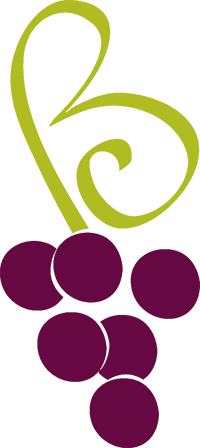- Mosel, Germany
"We're getting the band back together!" was how I felt asking Stefan Steinmetz to join the Bowler national portfolio this year. From 2005 to 2012, the Steinmetz wines were a key member of the influential and wonderful Mosel Wine Merchants portfolio, which first brought fame and attention to shining lights like Clemens Busch, Immich-Batterieberg, Matthias Knebel, Peter Lauer and others. I've followed and enjoyed drinking the Steinmetz wines since then, but never thought I would have the honor of representing them at Bowler. Fortunately, life is long and luck favors the prepared, so here we are.
Weingut Günther Steinmetz consists of 13ha of vines spread over a rather broad area of 20km in the heart of the Middle Mosel. The historic estate, centered in Brauneberg, is 120+ years old; Stefan's grandfather was one of the first in the village to bottle wines under his own name. The vineyards on the elegant, blue-white-and gold labels read like a who's who of legendary Mosel sites: Brauneberger Juffer, Piesporter Goldtröpfchen, Wehlener Sonnenuhr, Dhroner Hofberg, Mülheimer Sonnenlay, and Kestener Paulinshofberg, all ranked as VDP Grosse Lagen (Grand Cru's). Perhaps the most exciting and defining of Stefan's holdings are his sites in Wintrich, the Wintricher Gaierslay and Ohligsberg, two steep, south-facing, cool and breezy side-valleys of purple-hued slate and quartzite in which he holds commanding positions. There is a sense of breathing sacred air as one strolls through these quiet, half-hidden vineyards.
Stefan took over the winery when he was just 17 years old due to the sudden passing of his father in 1998. Not hoped for and not easy, it took a heroic level of determination to assume the mantle at such an important estate. His success and expansion of it in subsequent years has been remarkable. Today, his wines are considered a benchmark for the area, lauded by collectors and required reading in every major vintage report.
Farming and winemaking here are strictly conscientious. Grapes are harvested in low quantities, entirely by hand. As Stefan puts it: "The external economy is oriented towards natural viticulture, which includes the most environmentally friendly viticulture possible by not using fertilizers or herbicides and insecticides. In the cellar management, we renounce any addition of treatment agents such as yeasts and fining agents, as well as acid additives or deacidification limes. Also, no animal proteins are used. All wines, without exception, are fermented spontaneously in large wood or steel. The aim of my efforts is to create wines that are a "fingerprint" of everything that makes up the character of a great vineyard."
Stefan makes a full range of Rieslings from dry to sweet, all connected by throughlines of grace, harmony, and crystal-clear mineral expression. Those who like tension in their wines will not be disappointed. Also notable are his Pinots which come from a mix of German and French clones grown on slate. He vinifies these exclusively in neutral oak with varied levels of stem inclusion and maceration, depending on the site and vintage. He also experiments with other red grapes, including a particularly compelling Syrah. There are even a few Romanée-Conti barrels in the basement (don't ask, don't tell).
How can I express in a few sentences the special nature of this small but crucial family estate, its soul-gladdening wines and its kind-hearted, dedicated owners, Stefan and Sammie Steinmetz? I cannot. The wines will have to do that for me. I look forward to sharing them with everyone and helping this estate achieve even greater status and appreciation than it has already earned.










